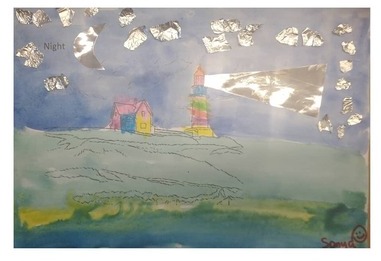
The aim of this post is the following: by the end of the post, the readers will be more familiar with the concept of connecting the EFL with the elements of Art Exploration and the appropriate craft activities.
As a source of potential inspiration for anyone who might want to try it.
The group
The kids for whom this course has been designed were a group of preschoolers, aged 4 – 6, who are and were part of a greater project at MAMM with Fun Art Kids and I was responsible for the English language slot. I taught them from October 2021 until February 2022 and we had lots of creative fun in English. I used to joke that these classes were the reason for me to wake up on Tuesdays.
My students were beginners and for many of them, if not for all, those sixty minutes of English were the only real exposure and the only real lesson and, despite the fact that it is not a lot of time (at all) we made progress that I was really happy with.
The format
The whole idea behind the Kids in the Avangard programme was that children should be given an opportunity to experience art and all the many ways of creative communication, through music, through dance and movement, through theatre, through visual arts and through English. The programme was run in module, each with their own theme (colour, shape, line etc) and within those modules the kids would participate in lessons that were separate entities devoted to an artist, an artistic movement etc. At the same time, kids work on a performance which takes place at the end of the ‘term’.
It was not easy to nest the English classes in that format but it was not possible. The main idea is that the English classes in which we deal with the beginner students (or a mixed ability group), it was impossible to aim for a very content-rich input and some adaptations had to be made for that. What I decided to do is to focus on giving the kids a good basis of English, including the vocabulary and structure from the pre-A level (although not necessarily not synonymous with and not in the order of the ‘typical pre-school curriculum’) and to combine it with the introduction to the world of the world Art and related craft activities. Just like in the case of all the other classes of the programme, our lessons were connected but each of them was a separate module, too.
The format of the lessons followed a typical EFL pre-school lesson with the hello circle, revision, new material introduction, movement and table time and it was supplemented with and built on songs and stories, too.
The palette of ideas
In the chart below you can see the content and the ideas for some of the lessons I ran as part of the course. In many ways it was an experiment, this whole course and, overall, it was a very successful experiment, the kind that makes you shout out ‘I want more of that!”. However, it was an experiement and, naturally, some lessons were more effective than others, and some ideas better than others.
In the chart below, I have decided to include those that I have tried and tested and loved, as those that I can strongly recommend, ready to use almost. All the misshaped ones will be worked on and developed and presented at a later date, when I have improved them a tiny little bit at least. But, in order to be honest and to share the experience as it was, I have also decided to include some of the things I have learnt by making the mistakes I did make. All of those you will find in the final section of this post aka What not to do.
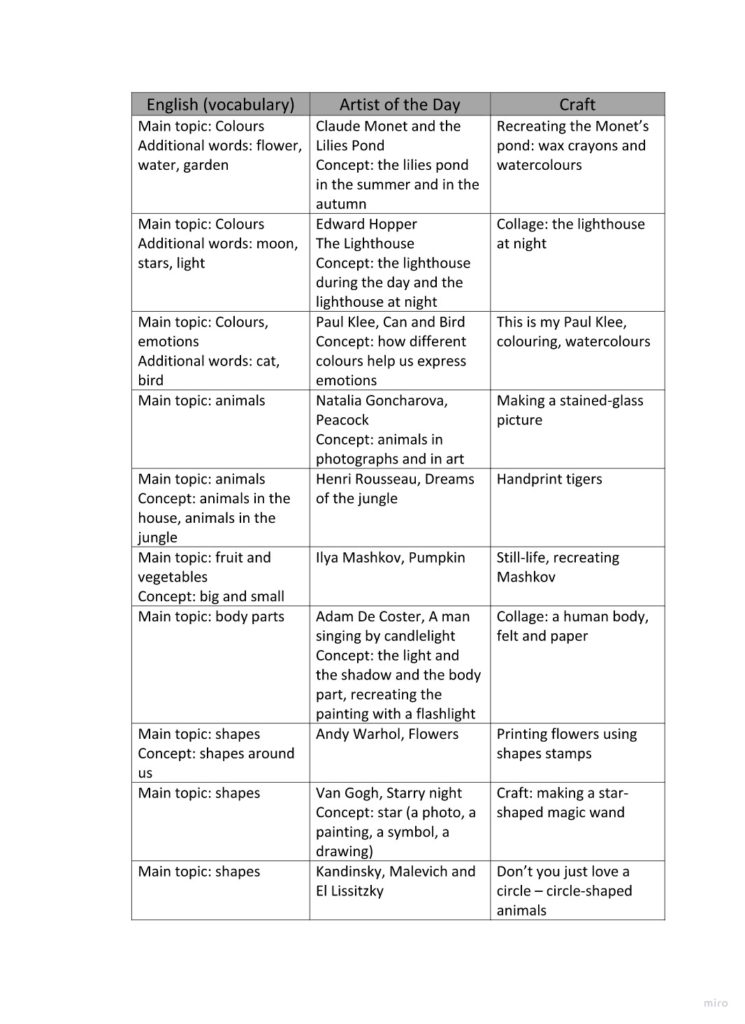
The gallery

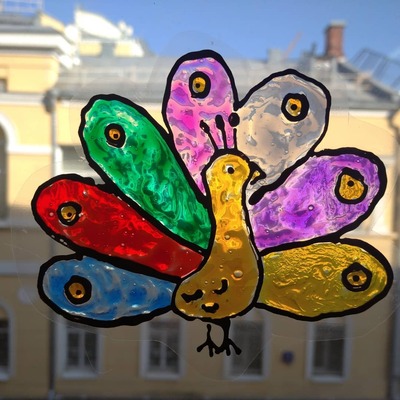


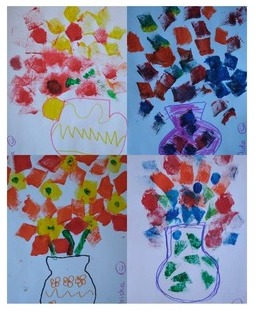
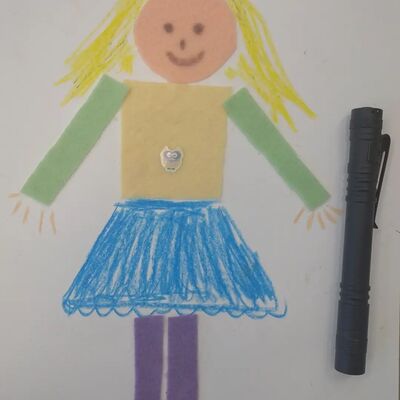
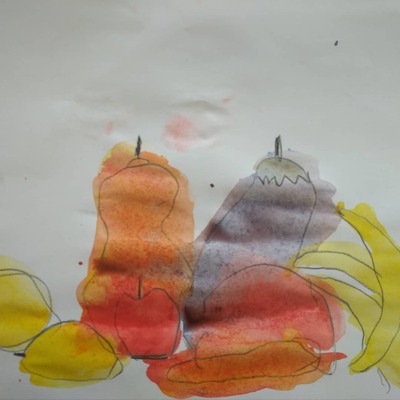

The not-so-successful side of the experiment
- The time allowances: either because it is a brand new thing for the kids (aka the entire course) or because it is a new element to the everyday class routine, the students need time to figure things out, to learn how to navigate around it and to make it familiar. Once they do, the whole programme will be a lot more effective and enjoyable. Don’t be upset if it is not an instant success.
- The high expectations regarding the content and the input: the main aim of this programme is not to provide the kids with any substantial input on the artist’s life and career. Instead, they are supposed to be given an opportunity to be exposed to the world art and to interact with it.
- Kids will produce the language, however, it is most likely to happen during the English language part of the lesson (introduction of the new vocabulary, practice, language games)
- Each lesson has three separate objectives (language, Art and craft) and it is perfectly natural that only one of them will be given priority in a lesson and that English and the language production will not always be the main focus. If these classes are taught as a part of the general English course, then it is assumed that they will be balanced with the regular, more productive English lessons. In case of a separate course, this aspect (and potential parents’ expectations) are even easier to manage by outlining the course objectives beforehand.
- Many craft activities look good on paper but they might not be easy to implement and to manage in a group of pre-schoolers. Trying, trialling and testing (aka making it first at home, before the lesson) is the best way to avoid and to get ready for at least some of the potential problems.
- Time is on your side. Fnding a strong link between the three elements and preparing a coherent lesson gets easier with time. And more and more enjoyable.
- There are plenty of things that can be done just with the simple resources such as markers, crayons or watercolours and paper but don’t forget that there is a lot more that can be done! Experimenting is fun!
Why?
If you are still wondering whether to start including art in your EFL lessons, please have a look at this earlier post and here you can find a great website with lots and lots ideas for art activities.
Happy teaching!
1 thought on “Teaching English through Art: a palette of ideas for pre-school”